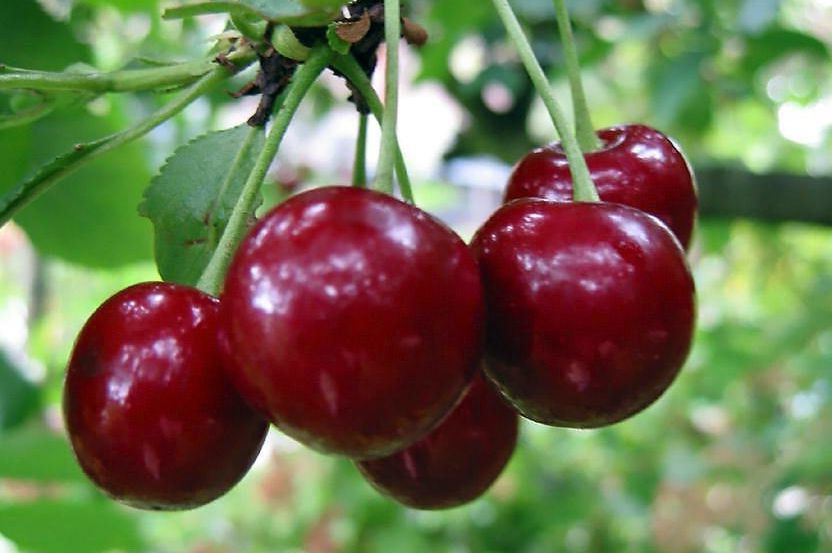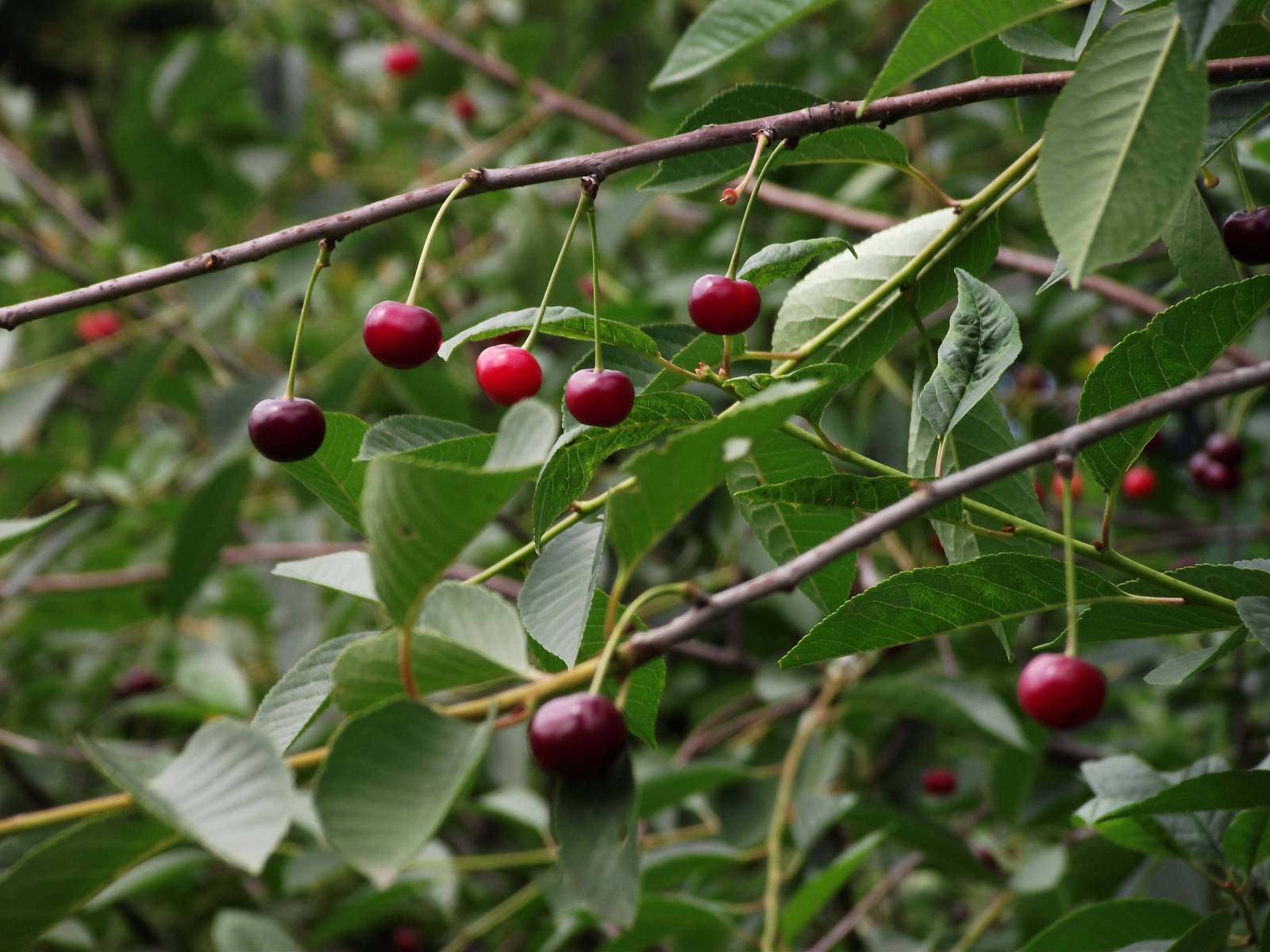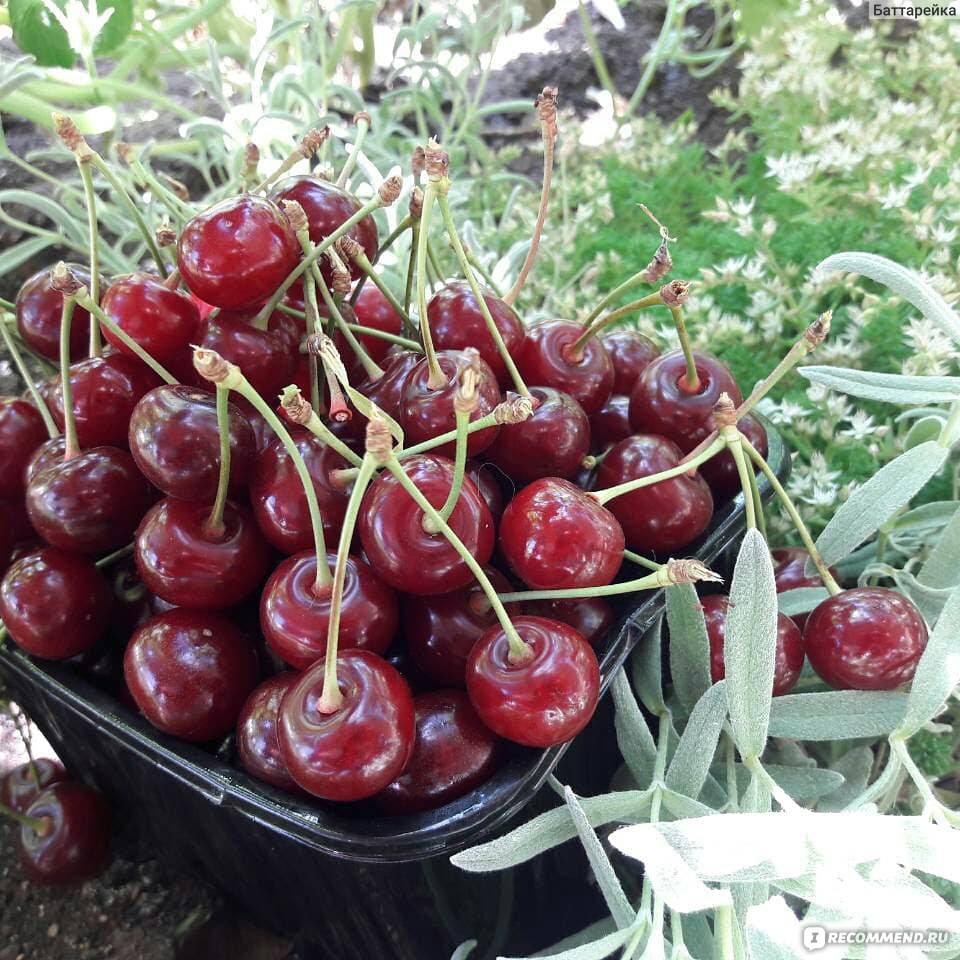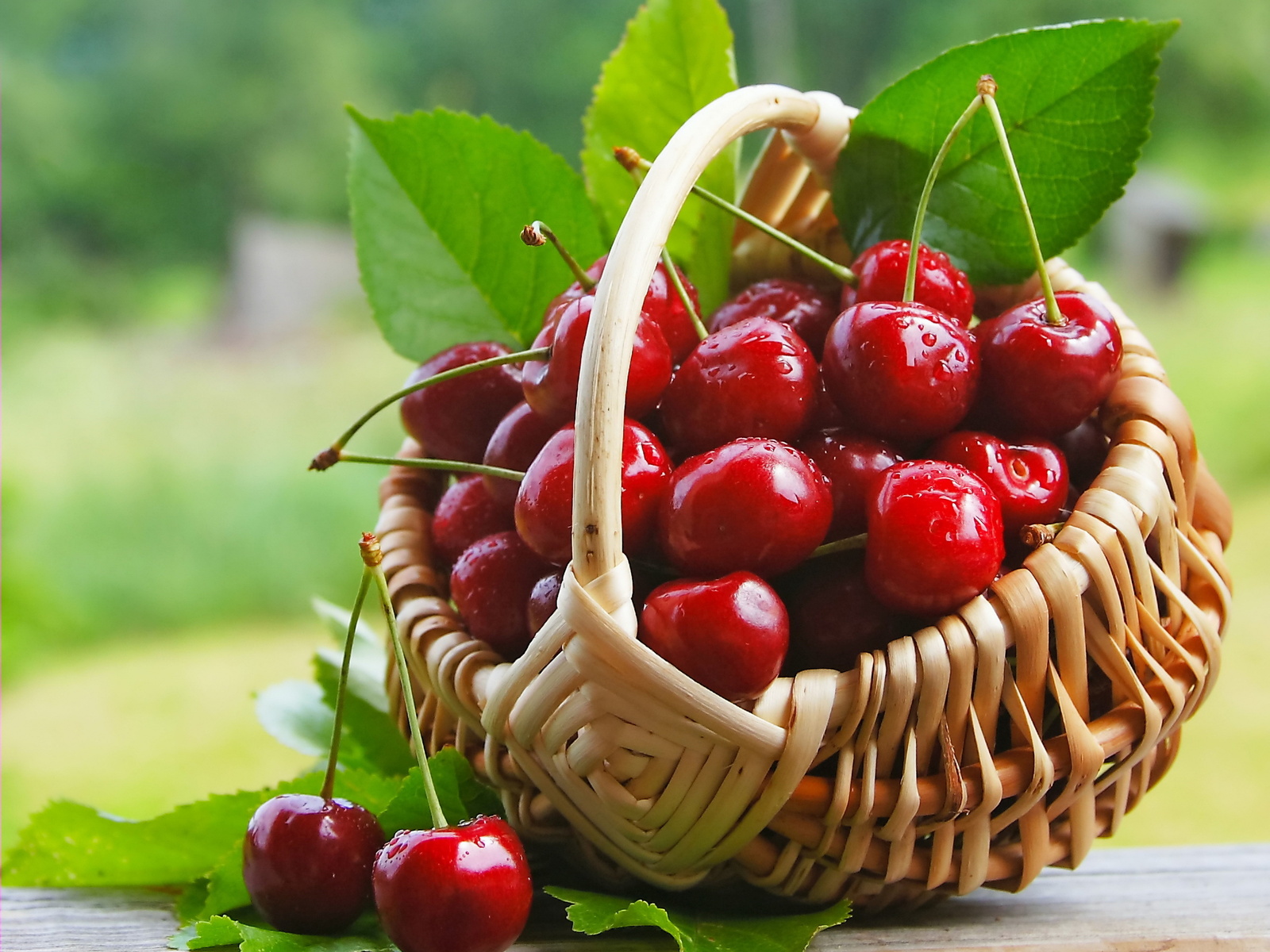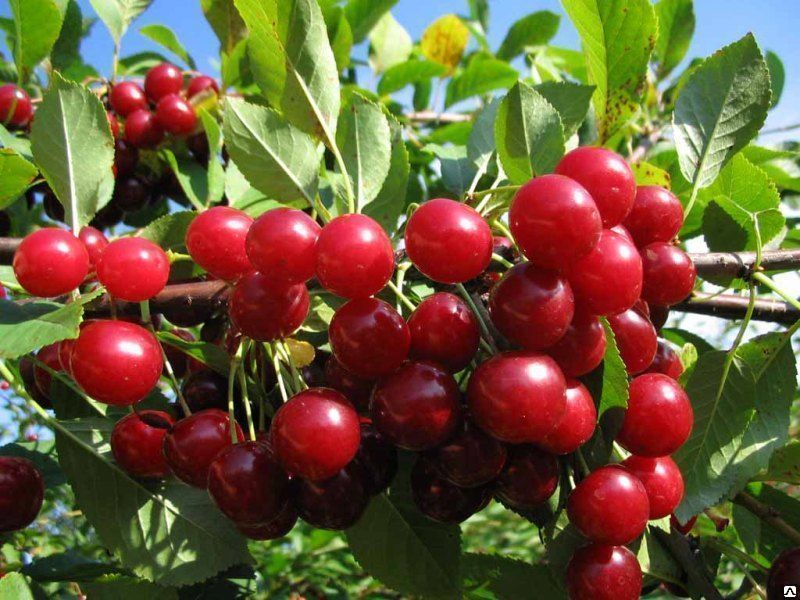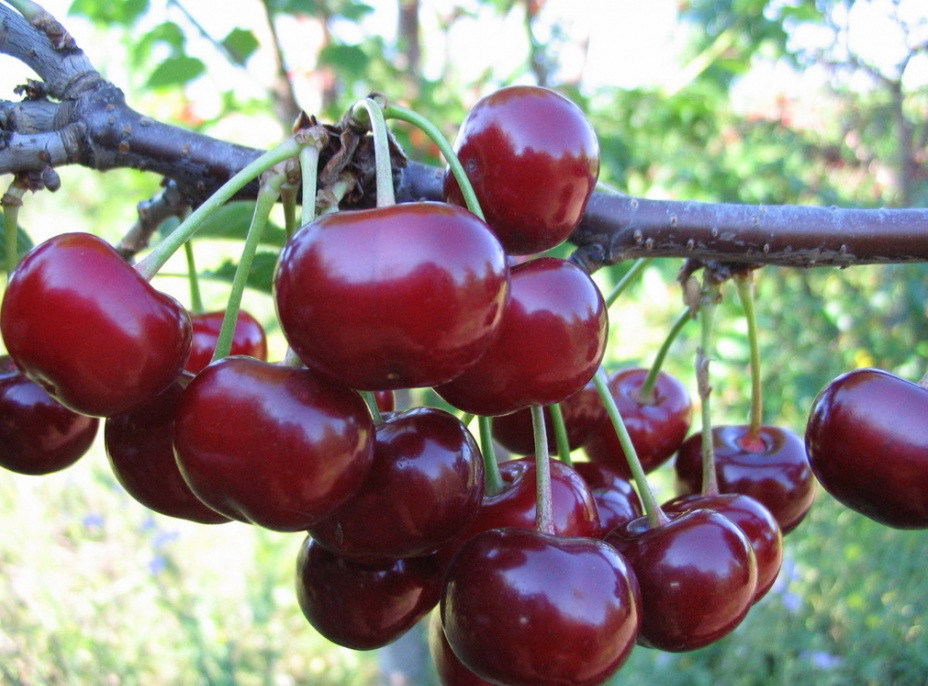Content:
It is no coincidence that this cherry variety received such a wonderful name. How many positive emotions are associated with a little vociferous songstress - a robin bird (robin) or a sweet and fragrant raspberry berry, some of this name will flood with nostalgic memories of the famous musical film "Wedding in Malinovka".
Be that as it may, but the bright and generous Malinovka cherry deserves to be on a par with the beautiful examples of nature and the creations of masters of culture.
The described variety was composed by two well-known breeders - H. Yenikeev, head of the department of fruit growing of the Institute of Horticulture and Nursery and agronomist-pomologist (specialist in cultivar research and the study of fruit plants) S. Satarova. In 1988, their brainchild was included in the State Register of the Central, Ural and Middle Volga regions.
Cherry Malinovka: description of the characteristics of the variety
First about the tree itself
It reaches a height of no more than 3.5 meters, it is not a giant, but it looks very harmonious due to the proportions created by nature itself.
Fluffy and dense round crown - this is how the tree looks from afar. On closer inspection, smooth and shiny leaves on the front side and lighter ones with notches on the back please the eye of a rich green color.
The main crop ripens on last year's shoots.
About fruits
A bright, shiny medium-sized berry (the largest reaches 4 g) has a sweet taste with a slight piquant acidity.
Very juicy fruits, the pulp is dense, fleshy, maroon color with a well-separating bone, which is a plus when cooking jam or jam without seeds. Their size is small.
A bountiful harvest ripens in late July - early August. The variety is bred on an industrial scale, as well as by amateur gardeners.
Pros of cherry robins
- High productivity;
- Excellent taste;
- Frost resistance;
- Average immunity to disease;
- Late ripening;
- Easy to care for.
Minuses
- Self-fertility, that is, without insect pollination, the crop cannot be harvested, despite the fact that in the spring the tree will stand in lush bloom. Therefore, not far from Malinovka, a pollinator of another variety should be planted - Vladimirskaya, Lyubskaya or Shubinka. Sweet cherries will do this task well too.
- Small size of berries.
- Poor resistance to moniliosis and cocomycosis.
Although the variety is frost-resistant, recurrent frosts can destroy the crop, as cherries bloom very early. There are several ways to delay flowering so that the flowers are not beaten by frost:
- in winter, throw more snow around the trunk, on top of which to scatter straw and sawdust - this will help the ground to remain frozen for a longer time, sap flow will slow down, which will delay the flowering period by about one week;
- smoke will help blooming trees survive the cold night - in the pre-dawn, the most cruel hours, they set fire to heaps of straw and dry manure. The smoke envelops the plants and protects them from the cold.
The chemical composition of berries
Vitamins:
- AND;
- group B;
- FROM;
- E;
- PP;
- H (biotin).
Macronutrients:
- Calcium;
- Magnesium;
- Sodium;
- Sulfur;
- Phosphorus;
- Chlorine.
Trace elements:
- Iron;
- Copper;
- Zinc;
- Iodine;
- Chromium;
- Manganese, etc.
The calorie content per 10 g of berries is 52 kcal.
The cherry leaf is also of great value, its chemical composition is no worse than that of berries. Experienced housewives use the leaves in cooking along with spices. Leaves are added to marinades, especially when preparing cucumbers, and are also used when cooking jam. There is a "royal" recipe for gooseberry jam, cooked in syrup infused with cherry leaves. And not only in cooking they are used. The rich composition has healing properties that are actively used in folk medicine.
Planting and leaving
The soil
Like any crop, cherries require quality soil. The requirements for it are as follows:
- sandy loam, that is, the amount of sand should exceed the content of loam;
- loose;
- deep bedding of groundwater;
- nutritional value (light sandy soil is much less fertile than loam, therefore fertilization is required).
How to plant cherries
It is best to plant it in the spring, but the seedlings should be dug in in the fall and covered with coniferous paws for the winter.
- A planting pit about half a meter deep and 70-80 cm in diameter should also be prepared in the fall - acidity is reduced (dolomite flour or lime is mixed with organic matter, complex mineral fertilizer is added).
- In the center of the pit, a mound is made, on which a tree is installed, and the root system is carefully straightened along the slopes of the earthen hill.
- The root collar must not be buried; it must be at the level of the soil.
- After the tree is planted, it is mulched with peat or humus.
After planting the seedling, the assimilation of nutrients occurs in two years. After this period, you need to feed the tree. If this is not done, the plant will begin to wither - growth will slow down, the danger of diseases will increase, and yield will decrease.
The distance between the trees is about 3 meters. Plant several different varieties correctly for cross-pollination.
Cherry dressing
Her set is traditional - organic matter, nitrogen and mineral fertilizers.
In autumn, cherries are fed with potash and phosphorus fertilizers, in spring - with nitrogen.
The first feeding is carried out after flowering, the second - 15-20 days after the first.
Watering
After the tree has bloomed, it should be properly watered - the process of forming berries begins, they need a lot of moisture, but there is no need to arrange a swamp on the site, the earth should be soaked half a meter deep.
Pruning
Crown formation is an important part of cherry care. This should be started as soon as the tree is planted.
There should be no branches at a height of 40-50 cm from the ground.
Further, the skeleton of the crown is formed, the main rule is to leave the branches evenly, remove everything growing inward towards the trunk.
Cherry gives abundant shoots from the roots - you need to part with it so as not to draw the juices from the tree.
Reproduction
Productive recognized breeding methods are:
- grafting;
- root shoots.
Harvesting
The robin ripens closer to August. For picking berries, it is necessary to choose a dry and fine day, its first half, but after the morning dew has dried.
Two ways to collect:
- manually;
- mechanically.
The summer resident picks berries by hand, since picking several trees is not a very difficult and time-consuming task. However, building by hand also involves different tricks:
- with a stalk (using a pruner);
- with a handle;
- without cutting.
The first and second methods allow you to preserve the berries for some time and transport them, but the third is used if the summer resident is not going to store the berries, but is planning to make compote, jam, or just pamper yourself and the family by eating fresh fruits.
For storage, the berries are placed in boxes or wicker baskets - so the product is naturally ventilated and does not rot for longer.
The gardener uses devices that facilitate work:
- In case the tree is very tall, you cannot do without a ladder.
- Hooks for pulling up the upper branches.
- Fruit pickers-nets (but they injure the fruits, the juice flows out, and the berry must be quickly consumed).
Characteristics of cherry diseases
Cherry moniliosis
Already in the spring, the gardener notices the drying up shoots, as if affected by burns. This is due to the fungus. It affects apple and peaches, pears and apricots, but cherries are not at all lucky with this dangerous disease.
The mycelium of the fungus infects the tree during the flowering stage and it begins to dry out.
How to resist such aggression:
- cut off diseased branches (below the affected areas);
- collect fallen leaves from the ground;
- to do the correct spring pruning of the crown, to prevent its thickening;
- use chemicals for spraying (fungicides) before opening the buds, after flowering and again after a month.
Cocomycosis Robins
Fungal disease. Mycelium grows in fallen leaves and cracks in the trunk bark. The leaves become infected very quickly, they are all mottled with red dots. The ulcers increase, the leaves collapse and fall off.
You cannot do without fungicides, moreover, at the stage of bud swelling. The second treatment is carried out during the flowering period. The third - if the disease has not yet been completely defeated (after flowering, in a couple of weeks). Final treatment is when the trees shed their leaves in the fall.
Caring for robinovka cherries is not at all difficult. By planting this tree on the site and giving it due attention, it will thank you with a generous harvest.
